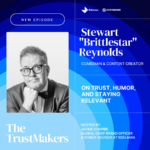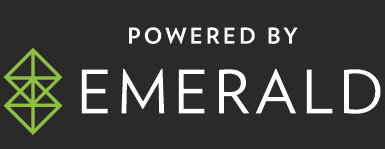By R. Larsson, Advertising Week
The Q3 2025 IPA Bellwether Report arrives at a delicate time, as the market slowly regains its footing after a period of hesitance. There’s a palpable sense of cautious hope in the air, suggesting that the industry is leaning towards wise choices rather than chasing after high-risk ventures. Overall growth may be steady rather than spectacular, but the direction of travel is clear: the advertising sector is adapting, experimenting, and reshaping what effective marketing means in an economy that continues to evolve.
A climate of measured optimism
Across the industry, the latest results are being read as a sign that confidence is returning, not in a rush, but in careful, deliberate steps.
Paul Evans, Founder and Chief Positioning Engineer at V2RSION, observed: “The Bellwether data shows cautious optimism returning to UK marketing, but it’s optimism tempered by economic reality. With inflation expected to ease only gradually through 2026, and fiscal policy still tight, growth will rely less on macro recovery and more on business adaptability.”
He added: “What we’re seeing isn’t a spending surge; it’s a strategic rebalancing. Companies are prioritising investment that builds resilience – closer customer engagement, owned channels, and initiatives that deliver measurable return. In that sense, the ‘flat’ main media picture tells its own story: confidence hasn’t disappeared, but it’s being redeployed into areas leaders can control more directly.”
Similarly, Csaba Szabo, MD EMEA at Integral Ad Science, echoed this sentiment: “The most recent IPA Bellwether Report provides grounds for measured optimism; UK marketing budgets continue to rebound, with digital investment and innovation taking centre stage. As advertisers navigate economic uncertainties, a continually fragmenting media ecosystem, and the explosion of AI-generated content across digital media, the need for transparent and accountable measurement has never been more essential to drive optimisation and efficiency.”
Video, storytelling, and the creator economy
If one theme dominates this quarter’s report, it’s video, and the increasingly sophisticated ways marketers are using it to connect with audiences.
Virginie Dremeaux, VP of Marketing and Communications at Comcast Advertising, highlighted the rapid acceleration of video investment: “It’s hugely encouraging to see the strong growth of investment in video, reflecting the success of this format across the European region – especially in CTV and streaming environments. Data from FreeWheel’s Video Marketplace Report for H1 2025 showed a 31% year-on-year growth in ad viewership on CTV in Europe and a 27% increase year-on-year for ad viewership on streaming services; signalling significant opportunities for marketers who invest in these channels.”
She added: “With the development of new formats – such as pause ads and shoppable ads, for example – it’s clear that innovation is driving performance and therefore spending in this category… It’s also worth noting that programmatic ad view growth in streaming environments rose by 44% in Europe between H1 2024 and H1 2025. Programmatic delivery makes inventory more accessible to a wider pool of buyers and so brings new investment into the channel; a factor that is adding to video’s continued success.”
Alex Powell, CEO at Pixels, also sees this as a pivotal moment for video-led content strategies: “Budgets may be stabilising, but the findings indicate that the next step for marketers is smarter investment in video. That means leaning into mid-funnel, measurable creator content, using strategic usage rights to extend top-performing assets, and applying AI-driven insights to maximise efficiency across channels. The latest report shows a growing trend, the creator economy isn’t just a side channel anymore – it’s where growth is happening.”
For Sarah Lawson Johnston, Managing Director, EMEA at Vudoo, this shift also signals a new era of commercial creativity: “The latest IPA Bellwether Report results show a decisive shift – as marketers pull back from short-term promotions, the challenge now is making brand activity commercially accountable. The renewed focus on brand building reflects a recognition that emotional connection drives long-term growth, but it must also show measurable outcomes.”
She continued: “Creative ad formats that link storytelling directly to buying opportunities are trending because they combine emotional impact with measurable results. With video and online ad spend up 6.7%, the opportunity is clear – brands that make storytelling shoppable will turn awareness into action and growth.”
Data, measurement, and accountability
Amid ongoing economic pressure, measurement remains at the heart of every marketing decision.
Sarah Robson, Global Head of Advertising Effectiveness at On Device, noted: “Campaigns continue to get more and more complex year on year due to media fragmentation and accountability is everything. Brands want to understand how each channel is working independently and in combination so they can maximise campaign effectiveness.”
She added: “Our most sophisticated clients are feeding brand lift data into outcome based models. This is not only helping them make their brand advertising fully accountable at a campaign level but is also improving the effectiveness of future media planning.”
Csaba Szabo of Integral Ad Science also underscored the importance of media quality signals in driving transparency and value, emphasising the role they play in “ensuring ads are seen by real people, are viewable in the right geographical locations, as well as measuring the carbon emissions impact of any campaign.”
Programmatic growth and the role of AI
Automation and AI continue to shape the new marketing frontier, driving both efficiency and debate about the balance between technology and human expertise.
Emma Lacey, SVP Sales Demand EMEA at Onetag, stated: “Within this broader digital growth, programmatic media continues to accelerate, driven by ongoing advances in automation and AI that deliver greater efficiency, higher media quality and faster outcomes.”
She also highlighted the need for balance: “The report also raises legitimate concerns around AI potentially replacing critical human skills and experience. We share this view: humans must remain central in managing and guiding the application of AI and emerging technologies to ensure they serve innovation responsibly.”
Joseph Worswick, Buyer Development EMEA/APAC at OpenX, agreed that AI’s role is now transformative: “The optimism shown in the latest IPA Bellwether Report is reflective of a broader momentum building across the industry… AI is at the heart of this shift and is helping to simplify digital advertising, automating workflows, and integrating intelligent models that enhance campaign performance and ROI.”
While Ossie Bayram, UK Vice President, Adlook, commented on the benefits AI can bring to the open web: “By leveraging deep learning to navigate and optimise the open web, brands can rebalance spend toward more diverse, high-attention environments – maximising value from audiences beyond the oversaturated spaces of social platforms.”
Shifting media dynamics and emerging channels
Beneath the headline numbers, deeper currents are reshaping the media landscape, from regional growth to the resurgence of audio and retail media.
Mark James, Chief Revenue Officer at Converge, remarked: “I suspect the bigger story is not the overall spend, but where it’s coming from. Breaking down trends by region, agency scale, and advertiser would reveal massive tides of change beneath the calm surface presented by IPA. While the big fish swallow each other, indie agencies are landing big client wins, and the dominance of the London media scene is being challenged by fast-growing regional hubs that have learned to zig while the capital zags.”
Christoph Berg, CEO and Co-founder of MINT Square, explored similar developments in audio and commerce: “Audio may look flat in the Bellwether data, but the infrastructure is shifting fast… What was once seen as a siloed, hard-to-measure format is becoming frictionless, scalable and strategically versatile. For brands seeking both reach and relevance, programmatic audio now delivers both – and is ready to be used more like video: targeted, data-driven and measurable.”
He added: “On a parallel track, retail media is gaining maturity… The question isn’t whether spend should shift – it’s how fast buyers can adapt to the new accessibility of previously fragmented channels like audio and retail.”
From shoppable storytelling and smarter programmatic models to the expanding role of AI, the latest Bellwether highlights a clear direction of travel: marketers are getting sharper, faster, and more deliberate about how they grow. In an environment still marked by volatility, success will belong to those who can balance experimentation with evidence and innovation with human judgment.











